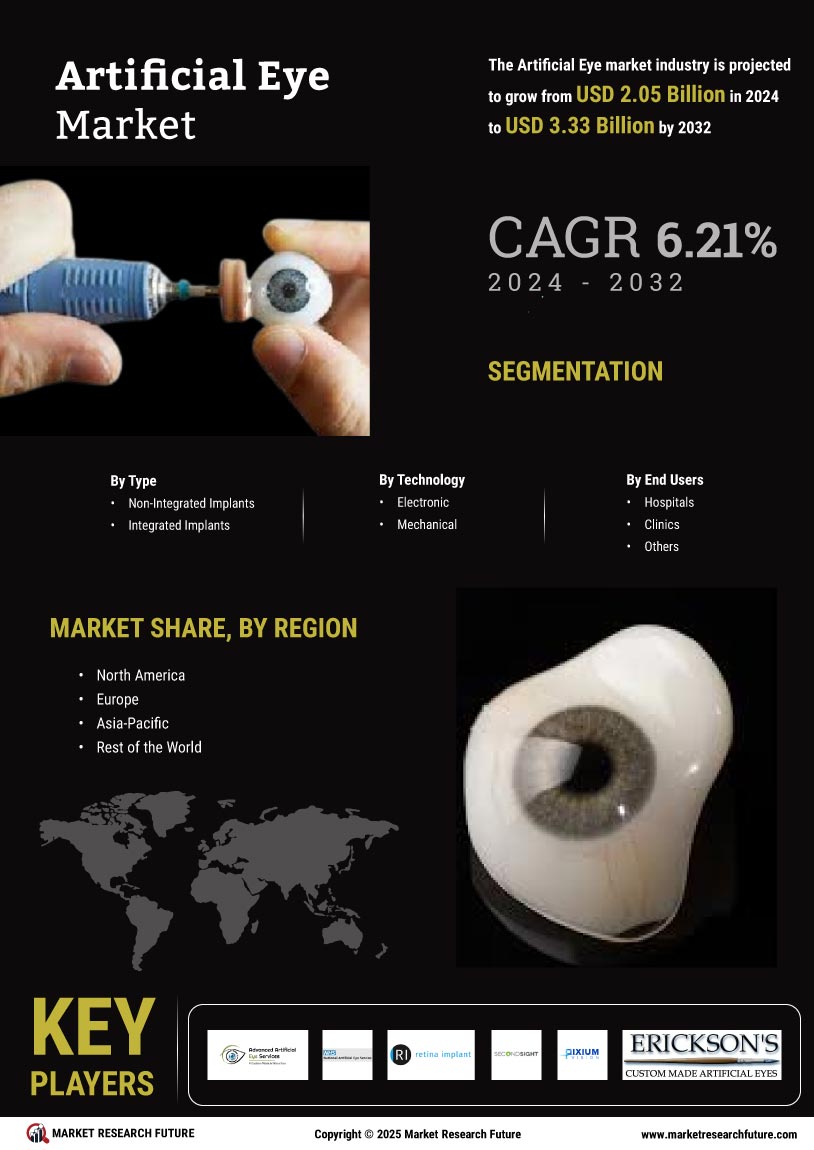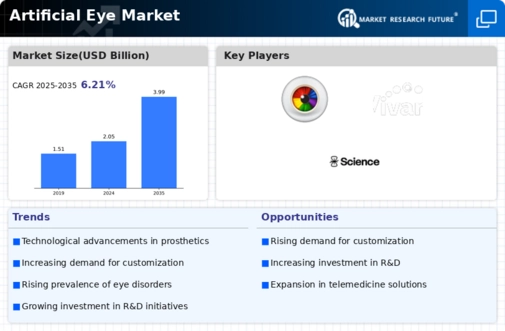Market Growth Projections
The Global Artificial Eye Market Industry is projected to experience substantial growth over the coming years. By 2024, the market is anticipated to reach 2.05 USD Billion, with expectations of reaching 3.99 USD Billion by 2035. This growth trajectory indicates a compound annual growth rate of 6.24% from 2025 to 2035. Such projections highlight the increasing demand for artificial eye solutions driven by technological advancements, rising prevalence of eye disorders, and growing awareness among patients and healthcare providers. The market's expansion reflects a broader trend towards enhancing ocular health and improving the quality of life for individuals with vision impairments.
Technological Advancements
The Global Artificial Eye Market Industry is experiencing rapid growth driven by technological advancements in ocular prosthetics and bionic eyes. Innovations such as retinal implants and smart contact lenses are enhancing visual capabilities for individuals with vision impairments. For instance, the introduction of devices that interface directly with the retina has shown promising results in restoring partial vision. As these technologies evolve, they are expected to attract significant investment, contributing to the market's expansion. By 2024, the market is projected to reach 2.05 USD Billion, with a compound annual growth rate of 6.24% anticipated from 2025 to 2035.
Rising Awareness and Acceptance
The Global Artificial Eye Market Industry benefits from increasing awareness and acceptance of artificial eye technologies among patients and healthcare providers. Educational initiatives and advocacy campaigns are playing a crucial role in informing the public about the benefits of artificial eyes, thereby reducing stigma associated with their use. As more individuals recognize the potential for improved quality of life through these devices, demand is expected to rise. This trend is likely to contribute to the market's growth trajectory, as healthcare systems adapt to accommodate the needs of patients seeking advanced ocular solutions.
Government Initiatives and Funding
Government initiatives and funding for research and development in the Global Artificial Eye Market Industry are pivotal in driving innovation and accessibility. Various countries are investing in programs aimed at enhancing ocular health and supporting the development of artificial eye technologies. For example, grants and subsidies for research projects focused on bionic eyes and retinal implants are becoming more common. These efforts not only foster innovation but also ensure that advanced solutions are accessible to a broader population. Such governmental support is likely to propel market growth, aligning with the increasing demand for effective ocular prosthetics.
Increasing Prevalence of Eye Disorders
The Global Artificial Eye Market Industry is significantly influenced by the rising prevalence of eye disorders, including macular degeneration, diabetic retinopathy, and glaucoma. As populations age, the incidence of these conditions is expected to rise, leading to a greater demand for artificial eye solutions. According to health statistics, millions of individuals worldwide suffer from severe vision impairment, necessitating advanced ocular interventions. This growing patient population is likely to drive market growth, with projections indicating that the market could reach 3.99 USD Billion by 2035, reflecting the urgent need for innovative artificial eye technologies.
Market Dynamics and Competitive Landscape
The Global Artificial Eye Market Industry is characterized by dynamic market conditions and a competitive landscape that fosters innovation. Numerous companies are vying for market share, leading to continuous improvements in product offerings and technology. This competition encourages research and development, resulting in the introduction of novel artificial eye solutions that cater to diverse patient needs. As companies strive to differentiate themselves, the market is likely to witness an influx of advanced products, enhancing overall consumer choice and driving growth. The interplay of these market dynamics is expected to shape the future of artificial eye technologies.














